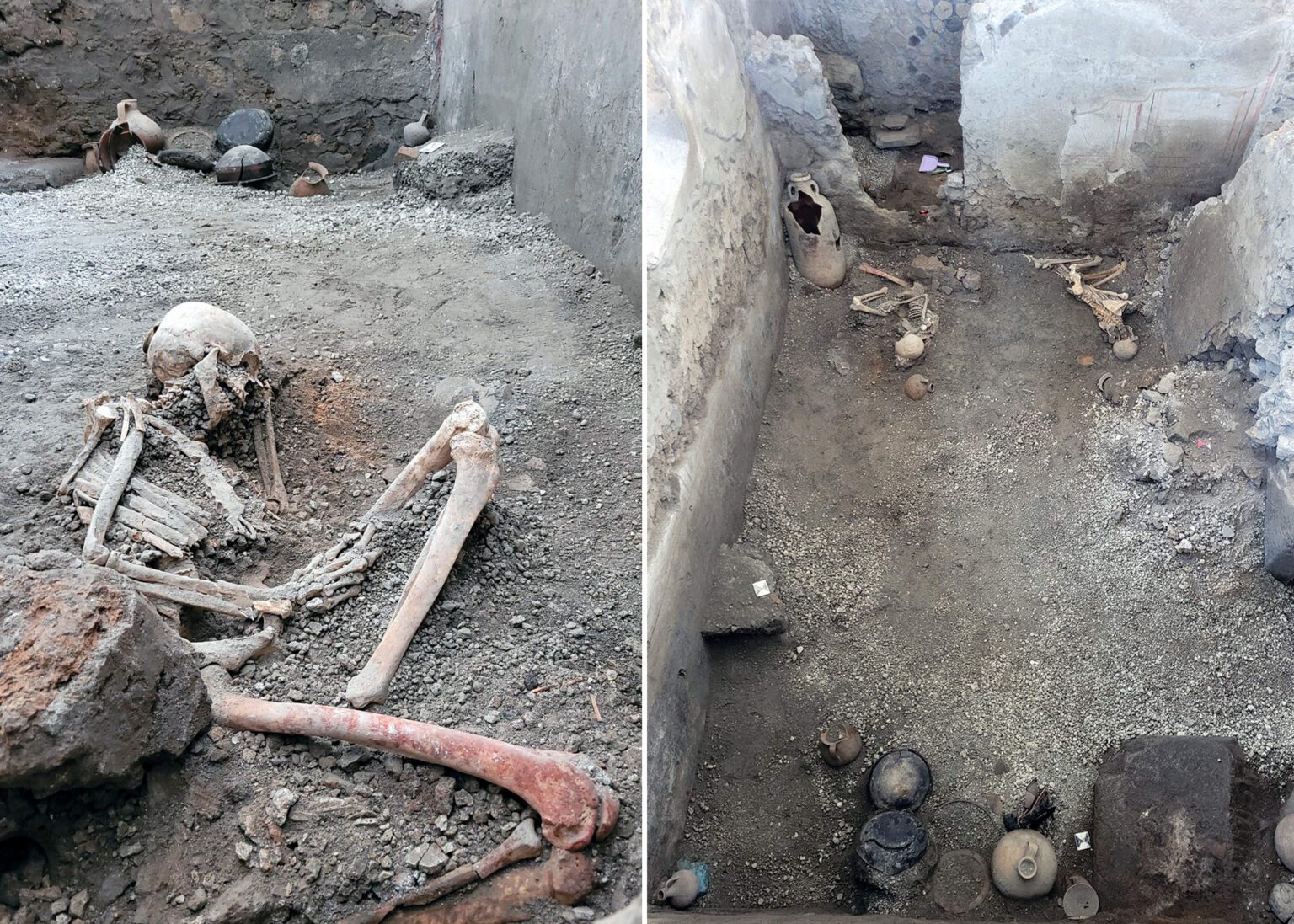Global Courant 2023-05-18 15:07:18
Two newly discovered skeletons found in the doomed Roman city of Pompeii show that ancient times’ most famous volcanic eruption also posed a lesser-known threat: earthquakes.
Italy’s culture ministry on Tuesday unveiled the bodies of two men, both believed to be in their 50s, who died in an earthquake triggered by the catastrophic volcanic eruption of Mount Vesuvius in AD 79.
The bodies were found covered in masonry from a collapsed wall – further investigation revealed they had been killed by the impact, their bones crushed.
“Modern excavation techniques help us better understand the inferno that completely destroyed the city of Pompeii in two days, killing many inhabitants,” said the director of the Archaeological Park of Pompeii, Gabriel Zuchtriegel, a German archaeologist.
Two skeletons discovered in Pompeii were those of middle-aged men who died in an earthquake during the devastating volcanic eruption that buried the city in 79 ADPompeii Archaeological Park / AFP – Getty Images
The eruption lasted more than 24 hours and unleashed the force of many thousands of atomic bombs on surrounding Roman cities and communities.
Pyroclastic waves — in which hot ash and lava hurtle like an avalanche at more than 50 mph (80 km/h) down the side of a volcano — destroyed nearly everything in their path.
The wall of destruction was so ferocious that ash fragments were found between the bones of the two men’s bodies, according to advanced scientific methods that can determine the process of events leading to death down to a victim’s last seconds.
But the new methods show that the pair were most likely two of many people killed by devastating earthquakes that struck along with the eruption.
Sophie Hay, an archaeologist who works in the media department of the Pompeii Archaeological Park, told NBC News that the earthquake that killed the two men appears to have occurred in the early stages of Mount Vesuvius’s eruption.
“The upper part of the wall had split off and shifted laterally, which is a phenomenon characteristic of earthquakes as opposed to the force of a pyroclastic flow. Thus, we know that these collapses, which killed the two men, happened in the early stages of the eruption.,” she said.
Writing in an online journal, Park Archeological of Pompeii, Zuchtriegel and other archaeologists said they had to remove layers upon layers of lapilli, small bits of ash and volcanic material to find the bodies. Ash and rock fragments are estimated to have fallen at a rate of 220 pounds per 10 square feet per hour for 18 hours, they said.
The excavation team that excavated the Insula dei Casti Amanti, or House of the Chaste Lovers, also found eight Roman containers, amphorae, leaning against a well, right where they had been left nearly 2,000 years ago.
About 13,000 people lived in Pompeii, about 14 miles southeast of present-day Naples. Both Pompeii and neighboring Herculaneum were seaside resorts favored by wealthy Romans, and both were left in ruins.
However, where the two men were discovered was not a grand palace, but an ordinary place that was renovated days after an earlier earthquake during a period known for intense seismic activity.
“This house wasn’t particularly luxurious. It was more like a workshop with a lot of objects, like amphorae, cooking pots, and they did lime work,” said Zuchtriegel.
“There were amphoras of water that were used to plaster the walls. We see here a city in a transformation that tried to recover, but then with the eruption everything is crushed in just two days of hell.”
The two skeletons were found in the insula of the Casti Amanti, under a wall that collapsed before the area was covered with volcanic material. Pompeii Archaeological Park / via AP; AFP
Archaeologists estimate that many of the buildings and bodies that contained Vesuvius in AD 79 are still buried and undiscovered.
The site of Pompeii was only rediscovered in the 16th century and has since become a major tourist spot – a $115 million European Union-funded project is underway to reveal more of its secrets.
“The discovery of these two skeletons shows us that we still have a lot to study, more excavations to uncover everything that is still (hidden) in this immense treasure,” Italian Culture Minister Gennaro Sangiuliano said in a statement.
Earlier this year, a lavish house in Pompeii was unveiled after 20 years of restoration. In 2020, archaeologists discovered the Roman equivalent of a fast-food restaurant: a frescoed termopolium, or hot drink counter, that would have suited wealthy tourists.








